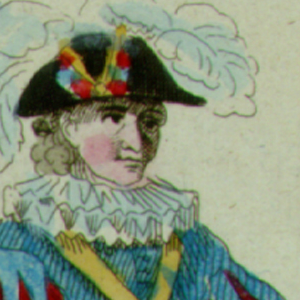Early Modern (1450 CE - 1800 CE)

The Joyous Accord
This allegorical image represents the sentiments of social unity that the National Assembly sought to promote through the Festival of the Federation of 14 July 1790 during the French Revolution.
Tension between Rich and Poor
The Marquis de Mirabeau, a well–educated nobleman, worried about the migration of French nobles to the cities and the passing of lands into the hands of "new men," wealthy commoners without a sense of paternal obligation toward the peasants on that land.
Scandal at the Church: José de Alfaro Accuses Doña Theresa Bravo and Others of Insulting and Beating His Castiza Wife, Joséfa Cadena (Mexico, 1782)
Systems of honor in colonial Mexico meant that insults were more than just Swords. Utterances that defamed men and women of good reputation had to be answered or the slight to their personal status within the community would be permanent.
Beaumarchais’s Understandings of Inequality
Like his predecessors of earlier generations, playwright Pierre–Augustin Caron de Beaumarchais—who became an important figure of the late Enlightenment because of the controversy surrounding his work The Marriage of Figaro [1784]—believed that a truly rational society would not tolerate
Montesquieu’s Attack on the Nobility
In his Persian Letters, published anonymously and abroad in 1721, Charles–Louis de Sécondat, Baron de Montesquieu, president of the Parlement of Bordeaux and a noble himself, made a scathing critique of nobility that set the tone for the philosophes’ attack on the inequality of eighteent
A Bread Riot
Bread was the basic staple of most people’s diets, and variations in the price of bread were keenly felt by the poor, especially by women who most frequently bought bread in the marketplace.
Apprentices and Masters
Unlike the Marquis de Mirabeau, (see document Tension between Rich and Poor) Jacques Savary sought to promote commerce and those who engaged in it.
The Saint–Marcel Neighborhood
The writer Louis–Sébastien Mercier recorded in his Portrait of Paris detailed and witty commentaries on many aspects of life among the common people. In this article on the Saint–Marcel neighborhood, he comments on the difficulties faced by urban workers.

People under the Old Regime
This image shows "the people" as a chained and blindfolded man being crushed under the weight of the rich, including both clergy and nobility.

Excerpt from The History of Mary Prince
“The History of Mary Prince, A West Indian Slave Related by Herself” is first-person account was written by British abolitionists and disseminated through the London Society for the Abolition of Slavery in 1831.